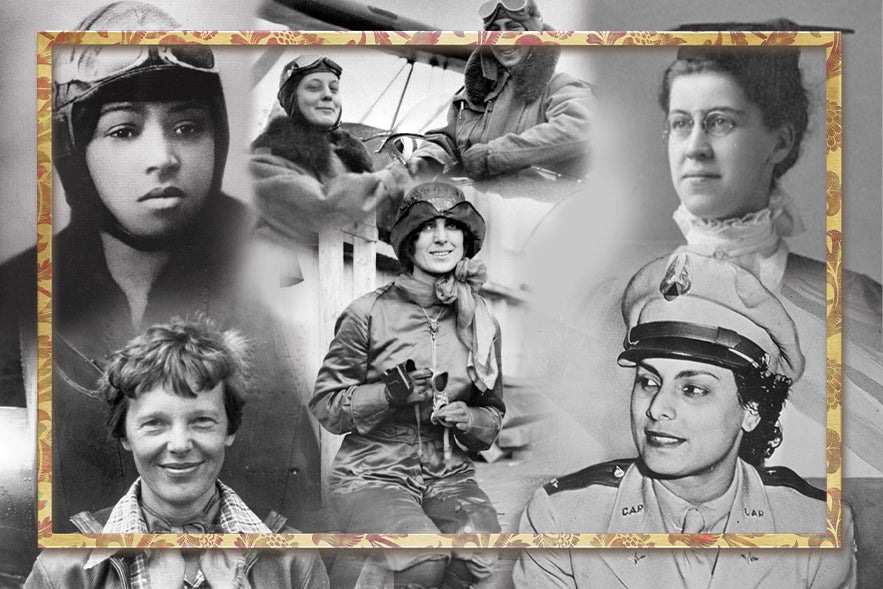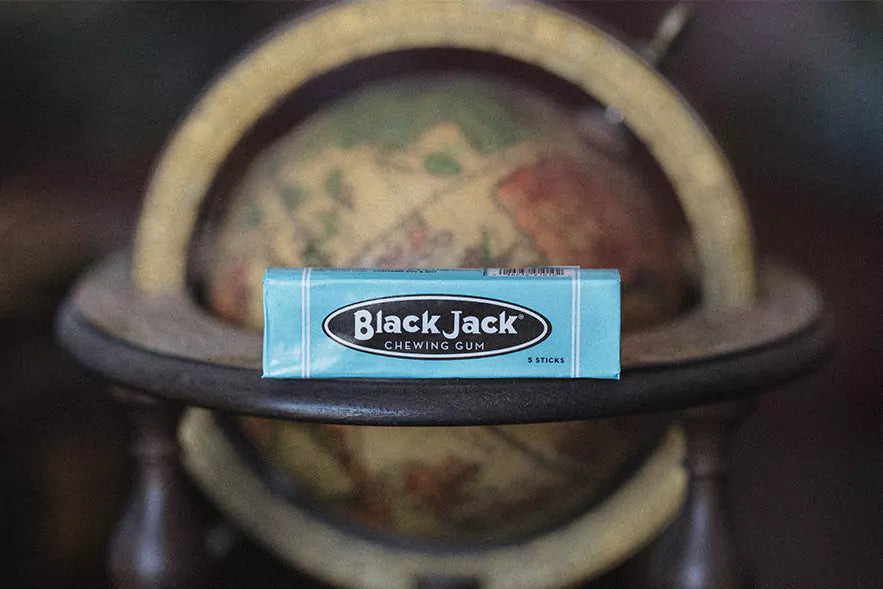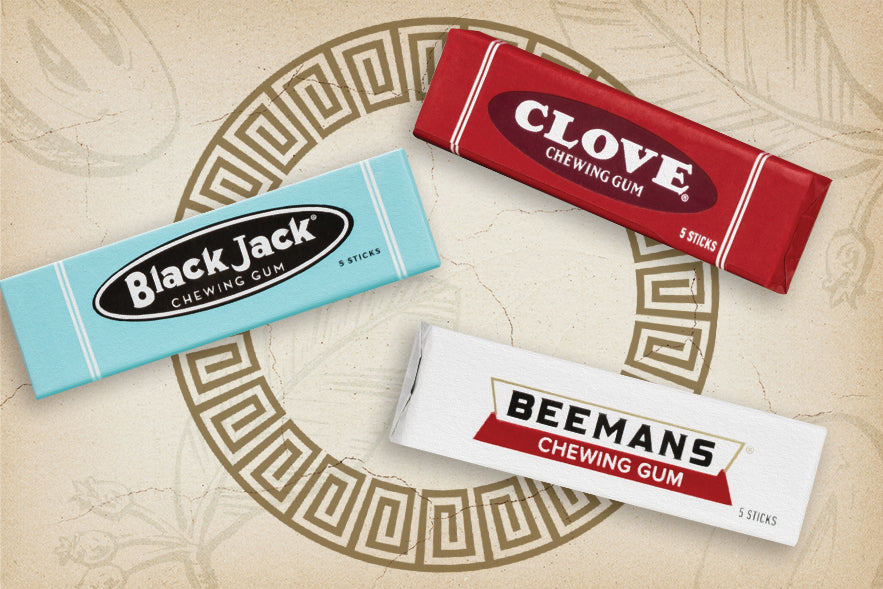As the gum of choice for pilots, Beemans was popularized because of its pepsin that would prevent nausea during flight. Soon, Beemans was synonymous with flying. In the spirit of constantly reaching for new heights, we’re celebrating Women of Aviation Worldwide Week which is March 7th-13th. We are looking back at some of the female pilots who broke records and barriers.

Meet Katharine Wright: The Innovator
The historic events at Kitty Hawk solidified Wilbur and Orville’s legacy as aviation pioneers. However, history tends to forget the third Wright sibling, Katharine, who was instrumental to her brother’s success. Katharine graduated from Oberlin College with a bachelor's degree in 1898. After university, Katherine propelled the family’s business and reputation, serving as a confidant and sounding board to her brother’s work. With the successful conclusion of the brothers’ momentous flight in 1903, newspapers rightly declared there might have been “no Kitty Hawk without Kitty Wright.” As the Wright family’s fame took off, their international appeal brought them to France in 1909. Here, Katharine’s brilliance and charm won over the European public, a standout from her notoriously shy brothers. She was awarded, along with Wilbur and Orville, the Legion d'honneur, making her one of the only women from the U.S. to receive it. Katharine was an avid supporter of the Women’s Suffrage Movement in Ohio and was the direction of the Young Woman's League of Dayton. Katharine’s contributions to and charisma not only advanced aviation she also elevated the voices of women. As the unsung hero of the Wright family, Katharine’s contributions to women’s suffrage and aviation ring true today.

Meet Harriet Quimby: The Original
Nicknamed “America's First Lady of the Air" Harriet Quimby’s aviation career was actually less than a year old. Despite this, her contributions and impact to the field are legendary. Born in 1875, Harriet was originally a journalist, publishing 250 articles and five screenplays. Her interest in flying was sparked in 1910, while she attended the International Aviation Tournament. Her immediate fascination and curiosity propelled her to learn how to fly. In 1911, she enrolled at the Moisant Aviation School in France, and in Augusta 1911, she passed her licensing test to become the first licensed female pilot in the United States. In the span of less than a year of being licensed, Quimby became the first woman to pilot an aircraft across the English Channel. This was remarkable as it had only been successfully done three years prior by Louis Blériot. Harriet pushed the limits of what women were expected to do and was a trailblazer in the advancement of safety regulations and representation in aviation. Harriet Quimby’s legacy remains, her bravery and ambition fueled a generation of female pilots

Meet Bessie Coleman: The Brave
Born in 1892 in Atlanta, Texas, Bessie Coleman was born into an era of extreme bigotry and racism as her mother was African American and her father was African-American and part American Indian. Her family faced systematic oppression that required her family to pick cotton and help their mother with washing to make ends meet. Despite these circumstances, Bessie continued to fight for education and opportunity. Bessie moved to Chicago, began to study French, and worked to save money for aviation school abroad as racism and segregation prevented her from obtaining any training in the United States. In November 1920, Bessie Coleman began her training at the Ecole d’Aviation des Frères Caudron at Le Crotoy. In June 1921, Bessie Coleman successfully became the first Black person to earn an international pilot’s license, the first African-American woman, and the first Native American to hold a pilot license. When she returned to the United States, she performed air shows that dazzled crowds. Her high dives, figure eights and loops were a sight to see. Her fans crowned her Queen Bess who reigns to this day. Bessie would not appear in shows that did not allow Black People to attend, she bravely advocated for equal rights and representation. Her ultimate goal was to open a flying school. While she tragically passed away after a mechanical failure during one of her shows, she always acknowledged the dangers of her job because she was born to fly.
Bessie Coleman and Beemans Gum have a special connection as in 1926, Bessie met Edwin Beeman, grandson of Dr. E.E. Beeman who (you guessed it!) invented Beeman’s Gum! Edwin and Bessie joined forces to make the final payment on her plane in Orlando.

Meet The Marvelous Miss Mary
Mary Von March was a local and national aviation pioneer, born in Detroit on October 1, 1895. While she gained national fame, her home state of Michigan would be at the heart of her legacy. Mary’s formal flight training began at The Stinson School of Flying in 1928. Upon completing her courses, she became the female pilot in Michigan as well as the first woman to own and operate a plane in her home state. Her national fame grew when she competed in the 1929 Women’s Air Derby against 19 of the top female aviators, most notably Amelia Earhart. This derby generated tremendous attention as air conditions were poor and mechanical failures were constant. This propelled the participants to establish the Ninety-Nines, supporting women in aviation to which Mary was a charter member nationally and in the Michigan chapter. Her accomplishments continued as she was the first woman accepted at Parks Air College in St. Louis, where she graduated in 1931. When WWII struck, Mary inspected aircraft engines for Pratt-Whitney. Here, Mary worked alongside thousands of female workers to support war efforts, most notably Geraldine Hoff Doyle, the original Rosie the Riveter. In her life, Mary worked alongside some of the most notable figures in women’s advancement. Her legacy is a reminder of the many who may not have received as much attention but whose accomplishments are both historic and inspirational.

Meet Amelia Earheart: The Voyager
Perhaps one of the most famous aviators in American History, Amelia Earhart was born in Atchison, Kansas on July 24, 1897. After World War I, she took her first airplane ride in California solidifying her love for the air. In January 1921, she started flying lessons with female flight instructor Neta Snook eventually earning a National Aeronautics Association license. Two days later, she participated in her first flight exhibition at the Sierra Airdrome in Pasadena, California. The following year, she became the first woman to fly solo above 14,000 feet. In 1935 became the first person to fly solo from Hawaii to the United States mainland. She was also the first to fly solo from Los Angeles to Mexico City.
She was the first woman to compete in the National Air Races in Cleveland, Ohio, and named America's Outstanding Airwoman by the Harmon Trophy committee. One of Amelia Earheart’s lasting legacies is establishing the Ninety-Nines, an international organization for the advancement of female pilots which still exists today and represents women flyers from 44 countries. Amelia Earhart’s final flight remains fraught with mystery and tragedy as she was declared lost at sea while trying to circumnavigate the globe. However, she remains a pivotal player in the advancement of female pilots.

Meet Willa Brown: The Champion
Willa Brown was born in Glasgow, Kentucky, in 1906 to a biracial family with a Native American mother and an African American father. She graduated from the Indiana State Normal School, now Indiana State University, and earned a master’s degree in business administration from Northwestern University. In 1934, Brown began her flight instruction under the direction of John Robinson and Cornelius Coffey. She also studied at the Curtiss Wright Aeronautical University and in 1935 earned a Master's Mechanic Certificate. In 1937, Brown became the first African-American woman in the U.S. to earn a commercial pilot’s license. Willa and Cornelius co-founded the Cornelius Coffey School of Aeronautics, the first black-owned and operated private flight training academy in the U.S. In 1939, their school was contracted by the government to train Americans to fly airplanes in case of a national emergency. Later that year, Brown became a co-founder of the National Airmen’s Association of America. She also joined the Challenger Air Pilot’s Association, the Chicago Girls Flight Club, and purchased her own airplane, all between 1939 and 1940. Brown taught dozens of pilots, many of which would become members of the acclaimed Tuskegee Airman. In 1941, Willa Brown became the first African-American officer in the U.S. Civil Air Patrol (CAP) and was commissioned as a Lieutenant. In 1943, Brown earned her mechanic’s license, becoming the first woman in the United States to have both a mechanic’s license and a commercial pilot’s license. As a teacher, mentor, leader, and pilot, Willa Brown remains a pivotal figure in aviation.



